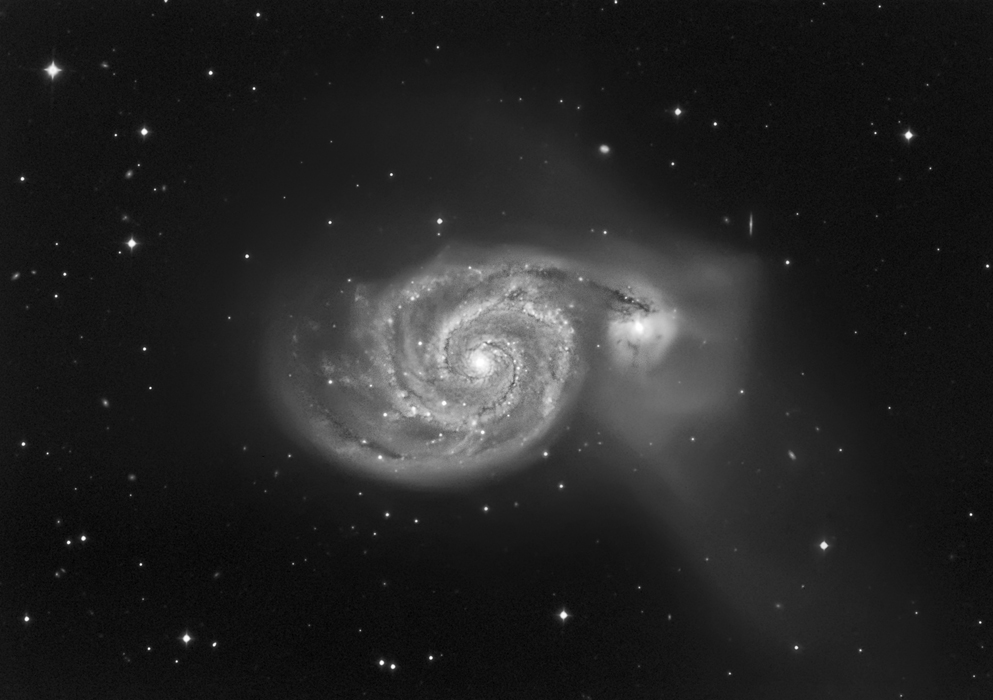M51 and NGC5195
Characteristics:
Magnitude: 8.4
Size: about 11' x 7'
Distance: 37 million light years
RA (J2000): 13h 29m 54s
Dec (J2000): 47 degrees 12' 17"
Position Angle (Pinpoint): +87 degrees 26'
Description:
Note: This is the second light
image for my VC200L scope (FL 1800mm, f9). The FWHM in the 16
best subs was in the range of 3", and the star shapes are not yet
perfect, indicating the need for a few more tweaks of collimation when
the weather is warmer. I'm not happy with it and feel that I can
get better resolution on a night of good seeing and after perfect
collimation. I also need to get a better feel for the use of
decon, and how much is too much, etc. Finally, the image does not
have enough depth in my view- lots of fainter stars are just at or
below the level of sensitivity of my system. This can be
corrected by longer cumulative exposure, but I also intend to purchase
a non-NIR blocked clear filter (instead of the NIR blocked luminance
filter that I currently use) to catch as many photons as possible at f9.
The famous face-on spiral galaxy M51
(NGC 5194) is located in the constellation Canes Venatici (Hunting
Dogs). It
was originally discovered by Charles Messier in 1773, although its true
spiral
structure was first realized by Lord Rosse
in 1845. The galaxy has a characteristic shape, in the form of an
inverted question mark, due to its association with another galaxy
located well behind M51 in the above photograph, known as NGC
5195. Note that this
smaller galaxy is seen edge on and is partly obscured by a long, thin,
prominent dust lane extending from M51. Interaction between M51
and NGC5195 is thought to trigger new star formation in M51 itself, as
represented by clusters of young, blue stars within the spiral
arms. M51 is a good target
for visual observation through small aperture telescopes in dark skies,
although it can be a challenging to discern its spiral structure in
more light polluted skies. More
information
about M51
may be found here.
Photographic Details:
Date: March 30, 2008
Scope: Vixen VC200L at f9 on the Takahashi NJP
Mount.
Autoguider: SBIG ST-402 with
Sky90 at f4.5.
Camera: Apogee U32 -20C.
Filters: Astronomik
Luminance filter.
Exposures: 16 x 10' Total
exposure 2.7 hours.
Conditions: Temperature was approximately 35 degrees
F; a little breezy.
Post-processing:
Calibrated, aligned, and Sigma Clip combined
in Maxim, followed
by deconvolution using Bob Vanderbei's Fat
Tail Deconvolution script. DDP
in ImagesPlus (IP). Further processing in Photoshop CS (16
bit format).
Please
note: Graphics on this website
may not be reproduced without author permission.
Back to Galaxies
Home
